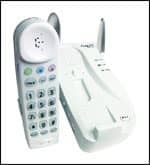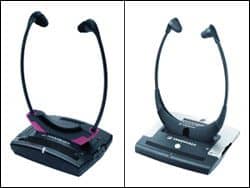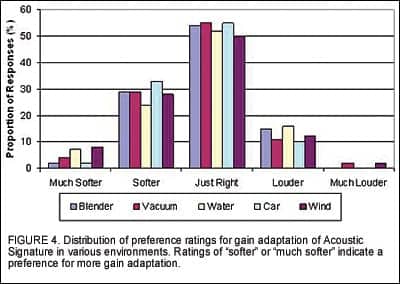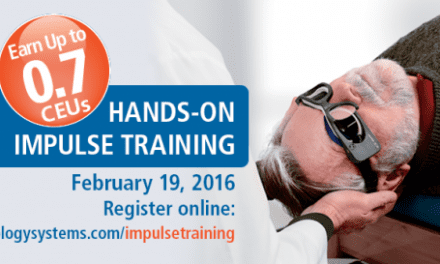Reconciling differences between subjective hearing aid user reports and objective performance data

|
The PPT-based counseling approach—and indeed general educational counseling—was shown to be helpful even to long-time hearing aid users who had never been entirely satisfied with their hearing aids.
It is not uncommon for clinicians to encounter hearing aid users who are dissatisfied with their hearing aids but who receive considerable benefit, as measured by improvement in performance on speech tests. Conversely, clinicians also come across individuals who are satisfied with their hearing aids but who seem to be receiving little or no benefit in terms of improved speech recognition. In other words, the results of speech tests sometimes conflict with subjective reports of hearing aid benefit and satisfaction.
It is difficult to reconcile discrepancies between subjective reports and performance in part because the materials and procedures used to evaluate each are so different. Furthermore, performance measures usually generate a percent-correct score or a signal-to-noise ratio (SNR), while questionnaires result in a variety of different scores and scales. Direct comparison is therefore not possible.
The Performance-Perceptual Test (PPT) was developed specifically to address this issue. It assesses perceived and measured ability to understand speech in noise using the same procedure, unit of measurement (S/N) and test materials. More specifically, a Performance SRTN (Speech Reception Threshold in Noise) and a Perceptual SRTN are measured using the sentence lists, masking noise, and adaptive algorithm from the Hearing In Noise Test (HINT).1
For the Performance SRTN, participants repeat back what they heard (as done in the HINT). This determines the SNR at which listeners can understand 50% of the material. For the Perceptual SRTN, the tester alters the SNR based upon whether participants report that they can “just understand everything that was said.” The Perceptual SRTN determines the SNR at which listeners perceive that they can “just understand all of the speech material.”
A third result is available from this test: the difference between the Performance SRTN and the Perceptual SRTN. It is known as the Performance-Perceptual Discrepancy (PPDIS) and is a measure of the extent to which listeners “misjudge” their hearing ability. When the Performance SRTN is lower (a more adverse SNR) than the Perceptual SRTN, it suggests that listeners underestimate their hearing ability; when the Performance SRTN is higher (a less adverse S/N) than the Perceptual SRTN it suggests that listeners overestimate their hearing ability. The test therefore enables a direct comparison between perceived and actual ability to understand speech in noise.
The PPT has been used in a number of studies which show the test’s reliability and validity. It was originally developed to examine the basis of Obscure Auditory Dysfunction (OAD). Individuals with OAD complain of difficulties understanding speech in noise and yet have clinically normal hearing. Saunders et al2 showed that 66% of individuals with OAD underestimated their hearing ability as compared to non-OAD matched controls.
The PPT was later used to examine the possibility that the Performance-Perceptual Discrepancy (PPDIS) might also relate to reported hearing difficulties and to reported hearing aid outcome among the general population. A study was conducted in which the relationship between the PPT and scores on the Hearing Handicap Inventory for the Elderly/Adults (HHIE/A) was examined for unaided listening. It was found that almost 15% of the variance in HHIE/A scores could be explained on the basis of the PPDIS alone, with an additional 14% of the variance explained by the Performance SRTN.3 In other words, reported hearing handicap is affected as much by a person’s perception of their ability to hear (as measured by the PPDIS) as it is by their actual ability to hear (as measured by the Performance SRTN).
Similar results were obtained for a study of aided listening.4 In that study, the participants were classified into three groups according to the mean expected HHIE/A score for their audiometric thresholds (as specified in Ventry et al5 and Newman et al6). It was found that individuals who reported more handicap than expected based on their audiometric thresholds had a more negative PPDIS (ie, they underestimated their hearing ability relative to individuals who reported expected handicap). In turn, these individuals had a more negative PPDIS than individuals who reported less handicap than expected. No such patterns were apparent for the Performance SRTN.
In another study, Saunders and Cienkowski7 used subjective ratings of hearing aid satisfaction to categorize individuals into groups of “contented” or “discontented” users. It was found that scores on the Performance SRTN and the PPDIS correctly classified 75% of the study participants. In other words, scores on these two variables alone correctly determined whether a participant was a contented or discontented hearing aid user about three-quarters of the time.
Having shown a relationship between reported hearing difficulties, hearing aid satisfaction and the PPDIS, it seems logical to investigate whether hearing aid outcome can be improved by better aligning perceived ability to hear with actual ability to hear. In an ongoing study, we are addressing this by determining whether counseling based upon the PPDIS improves the accuracy with which participants judge their hearing ability—and, more importantly, whether such counseling will decrease reported handicap and increase hearing-aid satisfaction, regardless of its impact upon perceived hearing ability.
PPT-Based Counseling
Research shows that patients are most satisfied with their medical care when they are provided with information and explanations from their provider, time to share their own concerns, discussion about the problem and solutions to the problem.8,9 The PPT-based counseling therefore includes each of these five steps:
STEP 1. Provision of information: Description of PPT and PPDIS scores;
STEP 2. Suggested explanations: Possible reasons for under/over-estimating hearing ability;
STEP 3. Subject exposition: Response from participant to our interpretation;
STEP 4. Discussion: Implications of over/ underestimating hearing ability;
STEP 5. Suggested solutions: Ideas for altering misperception of hearing ability.

The specific content of each step differs depending upon whether individuals underestimate their hearing, overestimate their hearing or accurately assess their hearing ability. The details of the counseling content for each step are shown in Table 1. Underestimation, overestimation, and accurate estimation are defined based upon normative data collected from Saunders et al3,4 such that:
• Underestimation = PPDIS value less than the 33rd percentile of the normative data.
• Accurate assessment = PPDIS value between the 33rd & 66th percentile of the normative data.
• Overestimation = PPDIS value greater than the 66th percentile of the normative data.
Study Synopsis
In our ongoing study, we are assessing the effectiveness of PPT-based counseling by comparing the hearing aid outcome of two groups of experienced hearing aid users. Individuals in Group 1 receive the PPT-based counseling described above, while individuals in Group 2 receive counseling that lasts a similar length of time but that does not address the PPDIS.
Participants. Data will be collected from 80 participants, 40 individuals per group. To date, testing has been completed for 29 individuals, 15 in Group 1 and 14 in Group 2. All individuals have symmetrical sensorineural hearing loss, are 52 to 75 years old (mean=65 years, SD=6.8), and are dissatisfied with their hearing aids. The 4-frequency pure-tone audiogram of Group 1 is 43.6 dB HL (SD=11.3) and of Group 2 is 49.5 dB HL (SD=12.9).
Procedures. Participants undergo routine audiological examination including otoscopy, pure-tone audiometry, typanometry, and complete questionnaires that measure various aspects of hearing aid outcome. Data from the HHIE/A and the Abbreviated Profile of Hearing Aid Benefit (APHAB)10 will be presented here. Clinicians also assess the PPT for unaided and aided listening. (A detailed description of PPT procedures can be found in Saunders et al.3)
Following completion of the PPT, participants are pseudo-randomly assigned to Group 1 or to Group 2 based upon their PPDIS score. More specifically, the first, third, fifth, etc, participant that underestimates his/her hearing is assigned to Group 1, while the second, fourth, sixth, etc, participant that underestimates his/her hearing is assigned to Group 2. The same process is used for individuals who accurately assess their hearing and who overestimate their hearing. In this way there are equal numbers of over-, under- and accurate estimators in each group. Following group assignment, participants receive between 20-30 minutes of counseling, the content of which is shown in Table 2 and further described below.


Two weeks post-counseling, participants complete follow-up questionnaires sent to them by mail. Ten weeks post-counseling, they return to the laboratory to complete the follow-up questionnaires again, along with the PPT for a second time and an exit interview.
Results
A total of 21 of the 29 participants tested so far (72%) underestimated their hearing ability. If the distribution of under-, over- and accurate-estimators was random, we would expect 33% of participants to fall into each category, since the definition of under-, over- and accurate estimation is based upon dividing the distribution of PPDIS scores into three equal groups (ie, 0 to 33.3rd percentile, 33.4th to 66.6th percentile, and 66.6th to 100th percentile). The fact that there are so many under-estimators in this group of dissatisfied hearing aid users strongly supports the notion that there is a relationship between hearing aid dissatisfaction and underestimation of hearing ability.
Repeated measures analyses of variance showed that there were no between-group differences in changes in Performance SRTN or PPDIS scores from between week 0 and week 10 (Performance SRTN: F=0.9, p= 0.340; PPDIS: F=0.4, p=0.553). This was expected for the Performance SRTNs; however, it was hypothesized that the PPT-based counseling might have altered PPDIS values. It is possible that a larger sample size will result in significant changes.
The questionnaire data better reveal the value of the counseling. The data in Table 3 show the percentage of participants whose questionnaire scores changed significantly between Week 0 (pre-counseling) and Week 10 (ie, 10 weeks post-counseling).

A significant change is defined as a difference in score greater than the 95% critical difference (CD) value for that questionnaire/subscale. Critical differences take into account the test-retest reliability of the questionnaire/subscale and provide a value beyond which it can be assumed that the measured difference is ‘real’ and not due to chance. The 95% CD refers to the value at which the change is considered to be real and not due to chance 95% of the time. Critical difference values are particularly useful when interpreting the effect of clinical interventions since they provide a metric for examining change from the data of a single individual.
In Table 3, Column 1 lists the questionnaire/subscale of interest; Column 2 shows the percentage of participants whose score improved by more than the 95% CD; Column 3 shows the percentage of participants whose score remained within +/- one CD, and Column 4 is the percentage of individuals whose scores worsened by more than the 95% CD. The numbers in parentheses are the percentages for each group separately (Group 1, Group 2). About 70% of questionnaire responses remained unchanged between Visits 1 and 2, while approximately 17% improved significantly and 17% worsened significantly. In light of the fact that all participants in the study had worn hearing aids for at least 6 months, and on average for 11 years, this relatively static set of questionnaire responses isn’t entirely surprising. It is perhaps more surprising to note that up to 20% of responses on some scales improved significantly following study participation and counseling. The contrast between the percentage of HHIE scores that worsened (38%) and APHAB scale scores that worsened (15%) is noteworthy. An explanation is provided below.
A greater percentage of Group 1 than Group 2 scores improved significantly in the APHAB and a lower percentage worsened significantly on the APHAB and HHIE/A between questionnaire administrations, suggesting the PPT-based counseling is more effective than the non-PPT based counseling at altering reported hearing difficulties.
Some of the most interesting data originates from the exit interview. Three questions in particular resulted in some interesting responses.
When asked “Do you feel differently about your hearing now?” a total of 12 participants in Group 1 and 7 in Group 2 responded “yes.” Some examples of responses included:
• “I am thinking more about my hearing. I realize I faked it a lot.”
• “The positive feedback you gave me about my hearing being better with my hearing aids than I thought was very helpful.”
• “I am willing to depend more on my hearing aids now.”
• “Your telling me about my hearing has helped me explain it to my wife and daughters.”
• “I understand that I am too cautious about my hearing. I am about everything.”
• “I have a better understanding of what hearing aids can and cannot do.”
• “I am more aware of what I can and cannot hear.”
The question “Do you feel differently about your hearing aids now?” resulted in an affirmative response from 9 participants in Group 1 and 6 participants in Group 2. Example responses included:
• “I have more respect for the hearing aids and wear them more regularly now.”
• “I feel as though they help me more than I originally thought they did.”
• “They are still a pain in the neck but the questionnaires helped me think more about what to expect.”
• “I am more confident with them. I am still frustrated sometimes but I am grateful I have them.”
• “The questionnaires highlighted the experiences I was having. They made me evaluate my difficulties.”
When asked “Do you think anyone else has noticed a difference in your hearing?” a total of 6 individuals in each group responded “yes.” Some said that their family and/or coworkers had noticed a change for the better, while others said that family members were more accommodating now that they knew more about hearing impairment. These accommodations included muting the television and/or looking at the hearing-impaired individual when talking and being more patient.
Three Take-Home Points
At least three lessons can be learned from these responses:
1) Questionnaire completion has value to the patient as well as the clinician. As was pointed out by many individuals, the questionnaires made them think more about their hearing difficulties and, as a result, they wore their hearing aids more. This might also explain why the HHIE/A scores of so many participants worsened between visits 1 and 2 in that completion of the HHIE/A made participants more aware of the impacts of their hearing loss.
2) Even long-time hearing aid users have much to learn about their hearing, and they benefit substantially from additional education. Further, this education can have immediate positive impacts on the extent to which individuals use hearing aids and how they think about them.
3) Providing take-home materials for patients to share with their spouse and family is highly beneficial. Patients reported that the new knowledge about hearing impairment and the limitations of hearing aids learned by family members resulted in improved communication behaviors. Furthermore, it is probable that the patient’s own expectations and behaviors also changed, creating a better overall family dynamic.
In summary, the PPT-based counseling—and indeed the general educational counseling—was helpful even to long time hearing aid users who had never been entirely satisfied with their hearing aids. It is hoped that additional data will reveal stronger evidence for the benefits of PPT-based counseling.
References
1. Nilsson M, et al. Norms for the Hearing In Noise Test: The influence of spatial separation, hearing loss, and English language experience on Speech Reception Thresholds. J Acoust Soc Am. 1992: 94(4, pt. 2);2291-2385.
2. Saunders G, Field D, Haggard M. A clinical test battery for Obscure Auditory Dysfunction (OAD): development, selection and use of tests. Brit J Audiol. 1992: 26;33-42.
3. Saunders G, Forsline A, Fausti S. The Performance-Perceptual Test (PPT) and its relationship to unaided reported handicap. Ear Hear. 2004: 25;117-126.
4. Saunders G, Forsline A. The Performance-Perceptual Test (PPT) and its relationship to aided reported handicap and hearing aid satisfaction. Ear Hear. 2006: 27(3);229-242.
5. Ventry I, Weinstein B. The Hearing Handicap Inventory for the Elderly: A new tool. Ear Hear. 1982: 3;40-46.
6. Newman C, et al. The Hearing Handicap Inventory for Adults: Psychometric adequacy and audiometric correlates. Ear Hear. 1990: 11;430-433.
7. Saunders G, Cienkowski K. A test to measure subjective and objective speech intelligibility. J Am Acad Audiol. 2002: 13; 38-49.
8. Stiles W, et al. Interaction exchange structure and patient satisfaction with medical interviews. Medical Care. 1979: 17;667.
9. Jackson J, Chamberlin J, Kroenke K. Predictors of patient satisfaction. Social Science and Med. 2001: 52(4);609-620.
10. Cox R, Alexander G. The Abbreviated Profile of Hearing Aid Benefit. Ear Hear. 1995: 16;176-186.
Correspondence can be addressed to HR or Gabrielle H. Saunders, PhD, National Center for Rehabilitative Auditory Research, Portland VA Medical Center, 3710 SW US Veterans Hospital Road, Portland OR 97207; tel: (503) 220 8262 ext. 56210; e-mail: [email protected]
| , (left) is a research investigator, and , is a research audiologist, at the National Center for Rehabilitative Auditory Research, Portland VA Medical Center, Portland, Ore. |





